History of the Library
The library has been an integral part of the UC Davis academic experience since the university, then known as the University Farm, was founded in 1908. The library initially began as one room and was located within the university’s Creamery building, which was one of only four buildings on the 779-acre campus.
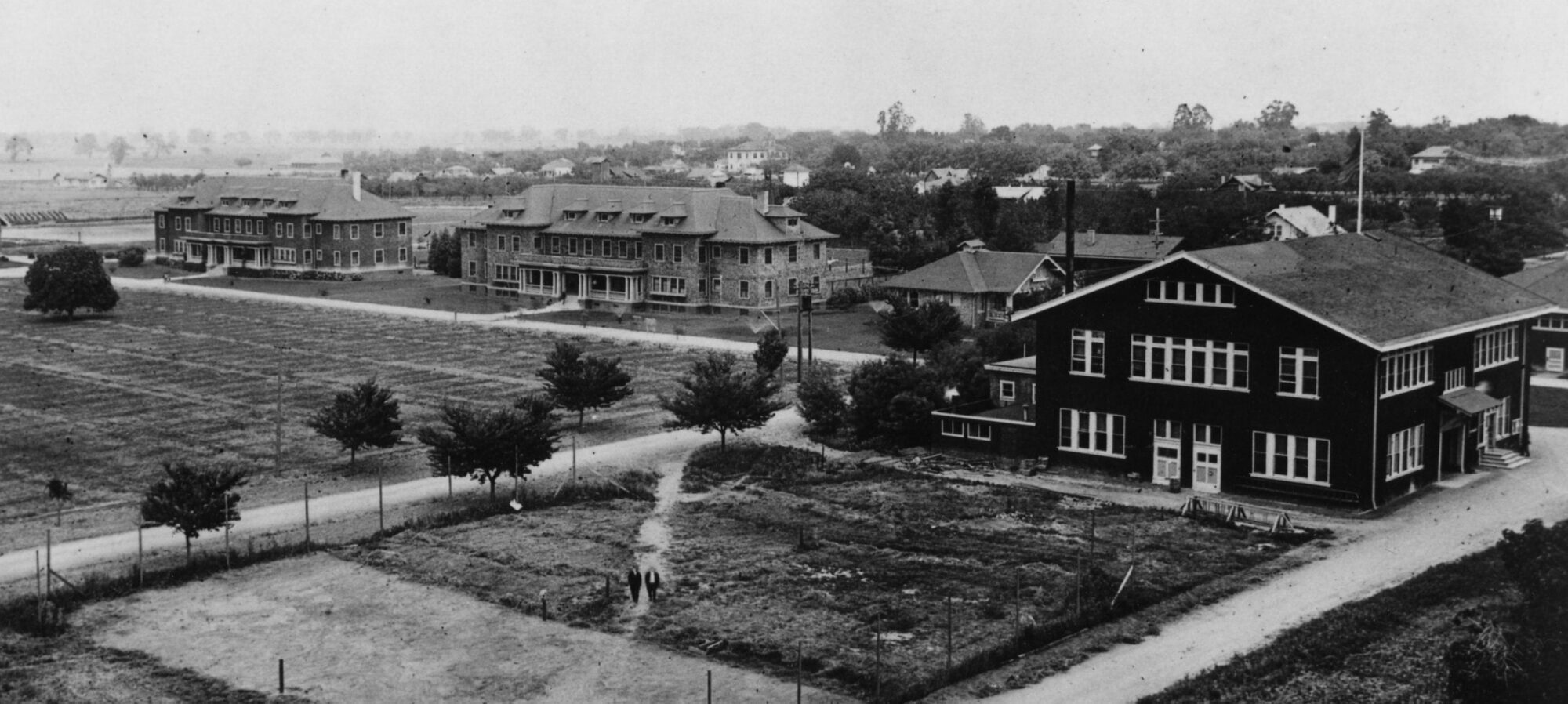
A strong beginning
The university’s first University Librarian, Margaret Mayberry, was hired in 1913, but it wasn’t until Nelle U. Branch became head librarian in 1924 that the library experienced real growth. During the mid-to-late 1920s, the library collection grew to nearly 2,000 volumes, the periodicals room was opened, and a reserve book system was established along with a formal arrangement for ordering books. In 1926 the library cataloging changed from the Dewey Decimal system to the Library of Congress call numbers, which eventually became the standard for academic research libraries throughout the nation.
Students save the library
By the 1930s, the library had grown to occupy five rooms in the Classroom Building. In 1938, however, the Classroom Building was condemned. In order to save the collection, UC Davis students formed a human chain to move the collection to temporary quarters in the recreation building behind West Hall.
Library becomes training facility in WWII
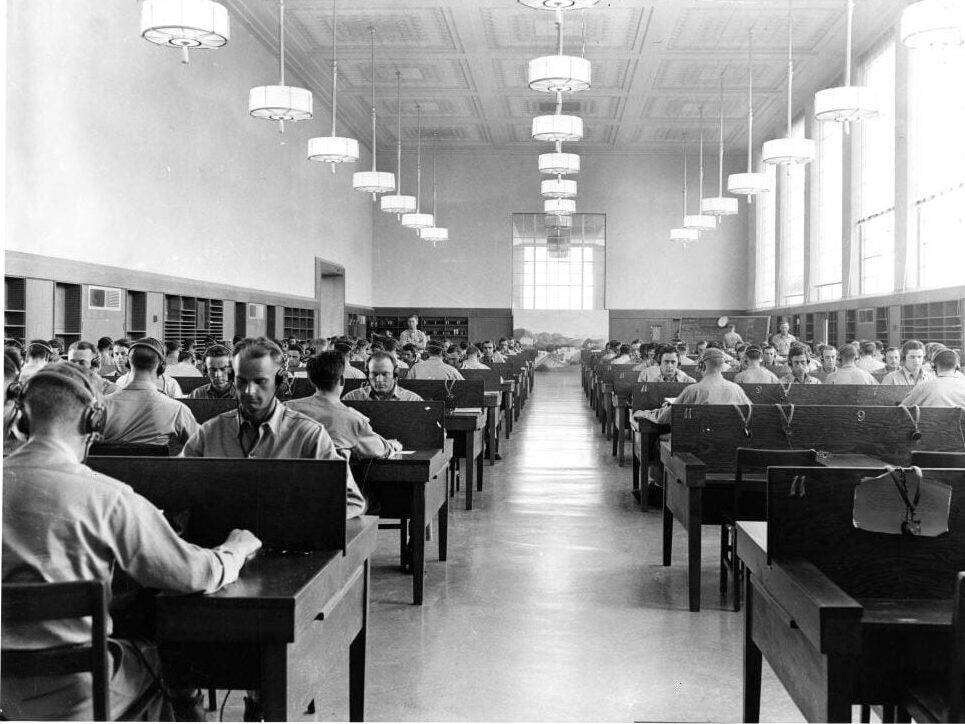
In 1940 the new library and administration building, which is the present day north wing of the Peter J. Shields Library, was completed. Soon after it opened, however, World War II began and the entire UC Davis campus, including the library, became a training facility for the Army Signal Corps. The signal corps occupied the campus from 1942 through most of World War II, using the Shields Library Main Reading Room as a place for specialized instruction in radio and wire operation and repair.
UC Davis’ first graduation at library
In the 1940s, an important milestone in the university’s history occurred at the main library. The university’s first commencement ceremony for a four-year degree was held in 1948 in the Sunken Garden, which is now the Peter J. Shields Library Courtyard.
Library branches out
In the 1950s, under the leadership of UC Davis Librarian J. Richard Blanchard, the Agricultural Economics Library was established, the Veterinary Medicine Library was made a branch of the library system, services were expanded to include microforms, a course in bibliographic research was created, and facilities were improved including the addition of air conditioning and new stacks. During this time, the library also acquired F. Hal Higgins Library of Agricultural Technology and C.K. Ogden Library.
Growth in the ’60s
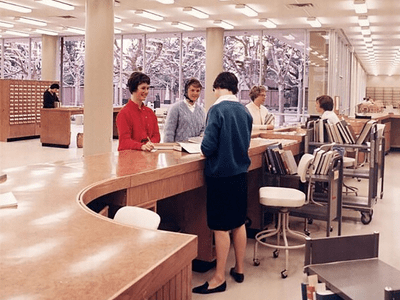
The library saw tremendous growth during the 1960s. Between 1961 and 1967, the collection more than doubled to 500,000 books. The footprint of the library also expanded significantly with the addition of two new wings — south and east — and the Special Collections department was created. In 1966, with the founding of the UC Davis School of Medicine, the Veterinary Medicine Library was converted into the Health Sciences Library and construction for a new health sciences library began. All of these accomplishments and more led to the UC Davis Library becoming a member of the Association of Research Libraries in 1969.
Millions of books and two new libraries
The library collection continued to grow in the 1970s. In 1974, the library acquired its one-millionth book, Emil Mrak: A journey through three decades, an oral history of Emil Mrak, who served as UC Davis’ chancellor from 1959-1969. Just four years later, the library collection grew to 1.5 million volumes.
Another special milestone during the 1970s was the naming of the main library after Judge Peter J. Shields. The 1970s also saw the opening of two new libraries: the Physical Sciences Library in 1971 and the new Health Sciences Library in 1977.
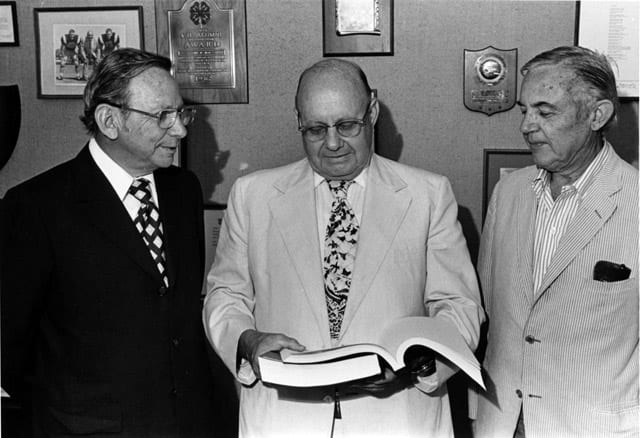
The 1980s were an era of growing recognition and prestige for the UC Davis Library. In 1980 the university became a member of the Research Libraries Group, and in 1983, the UC’s Melvyl online catalog was made available for public use. In 1984, UC Davis’ Health Sciences Library was named for Loren D. Carlson, the chief innovator of the curriculum that has been the basic curricular pattern of the UC Davis School of Medicine. Additionally, thanks to an endowment from Margaret B. Harrison, the Michael and Margaret B. Harrison Western Research Center and Margaret B. Harrison Preservation Lab were created. By the end of the decade, the library’s collection totaled 2 million books and construction on a new west wing of Shields Library was underway.
The digital age
In the early 2000s, the library introduced wireless access and created a Library Instruction Lab for hands-on teaching of electronic catalogues and databases.
The library’s integration of digital resources and information technology gained momentum with the hiring of University Librarian and Vice Provost of Digital Scholarship MacKenzie Smith in 2012. Under Smith’s leadership, the library created new programs in the library for scholarly communications, data science and informatics, data management, digital archives, online strategy, communications, fundraising, and equity, diversity and inclusion. Smith also helped launch the university’s Data Science Initiative, leading to the creation of the UC Davis DataLab for data science and informatics.
Additionally, the UC Davis Library has become more involved with nationwide, large-scale digitization initiatives, such as HathiTrust and the Google Books initiative, and transformative open access publishing initiatives like TOME: Towards an Open Monograph Ecosystem, which aim to make published scholarly research freely available online.
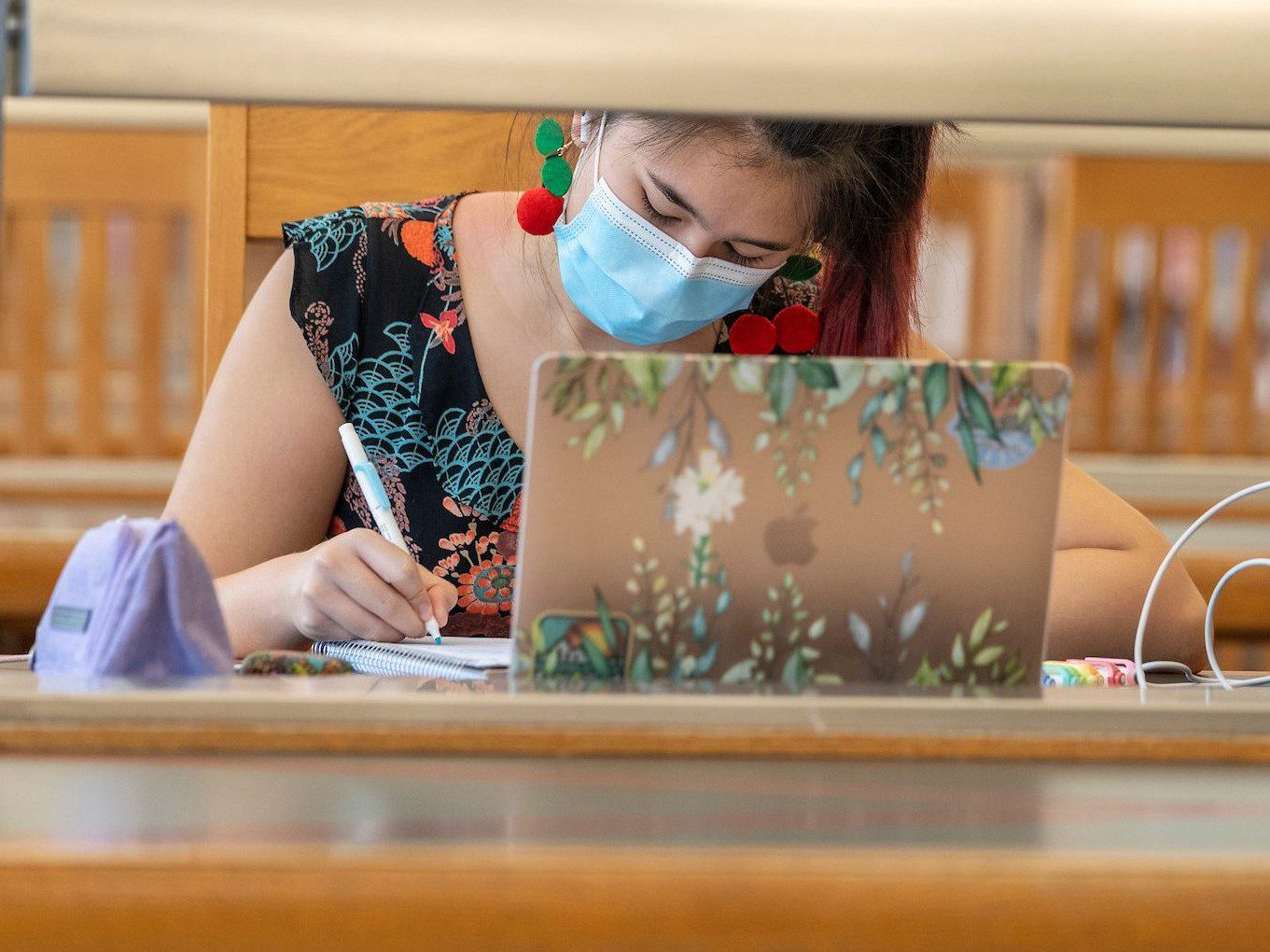
The lengthy period of remote teaching and learning during the COVID-19 pandemic accelerated the library’s transition toward digital resources — from a growing range of interactive and streaming media resources, to industry-leading research efforts on the future potential of digital book lending.
In 2018, the library’s physical sciences and engineering (PSE) collections were reintegrated with those at Shields Library and the UC’s shared Northern Regional Library Facility as the PSE Library building was converted into space for research initiatives in quantum mathematics and physics, data science and artificial intelligence. The Carlson Health Sciences Library closed as library user and study space in June 2022. Meanwhile, library staff are evaluating ways to reconfigure the physical space in Shields Library to enhance support of the technology, research and study space needs of the UC Davis community today.
The library currently has a collection of 10 million items, serves nearly 1.7 million visitors annually — 93 percent of whom are students — and is ranked among the top 100 academic research libraries in North America.